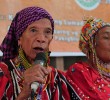By the Policy Study, Publication, and Advocacy
Center for People Empowerment in Governance (CenPEG)
(This issue analysis comes in two parts: 1) Bringing the MILF to the Peace Talks; and, II. The Peace Process and U.S. Role)
I. Bringing the MILF to the Peace Talks
Peace is not just the absence of war. It is the outcome of settling an armed conflict by addressing its fundamental roots toward a just and lasting peace. Unless the causes are addressed, any peace that is forged is just a means of preserving an unjust status quo leading to bigger tensions.
In the old days, peace terms were prescribed by victorious states and armies in a war or armed conflict; the terms usually included disarming the vanquished and dismembering territories. The impositions in the treaties that ended the two major world wars of the 20th century yielded no lasting peace: World War I led to World War II, and the latter was followed by the so-called “cold war” and thereafter by the permanent and borderless “war on terrorism.”
In the Philippines, the ongoing peace talks between the Arroyo government and the Moro Islamic Liberation Front (MILF) fits into a peace process paradigm developed by capitalist countries led by the United States. Sometimes referred to as globalization-driven, the peace process – somewhat similar to the UN’s “peace building,” “conflict resolution” or “dispute settlement” – purportedly aims to address the core issues of the Bangsamoro problem, namely, the Moro people’s ancestral domain claim and self-rule.
The trouble is, not all “peace processes” are success stories as advocates and current political literature on this paradigm admit. In fact, the backlash generated by a controversial Memorandum of Agreement on Ancestral Domain (Moa-AD), which is a product of this peace process, and the resumption of hostilities are imperiling the peace talks between the GRP and MILF.
Two major peace talks
The centuries-long Bangsamoro struggle for self-determination – in terms of having a separate and independent state – has gone through two major peace negotiations with the government. The first, held with the Moro National Liberation Front (MNLF), traversed through 20 years ending in the 1996 final peace accord that has been criticized as inadequate in building autonomy and development for the ARMM. The second, with the Moro Islamic Liberation Front (MILF), started in 1997 with an agreement on the cessation of hostilities followed by the Tripoli agreement of 2001(1) . Unfolding in this second process are seemingly irreconcilable interests representing not only the MILF and GRP but also the local elite, investors, and foreign governments.
In the GRP-MNLF peace talks, a confluence of events – on the part of the Marcos regime the economic crisis and the need to tap Middle East countries for oil and market for cheap Filipino labor, and, on the MILF military setbacks and the gradual loss of armed support from Libya and other OIC countries – drove both parties to enter into a negotiated political settlement. In the early phase, however, a faction of the MNLF that disagreed with the peace talks, led by Salamat Hashim, formed the MILF in 1977. The MILF has been the main revolutionary Moro group with its armed component, Bangsamoro Islamic Armed Forces (BIAF), consistently fighting for secession.
The MILF suffered a major setback when 50 of its military camps were destroyed by the AFP in the total war unleashed by then President Joseph Estrada in 2000 and again, when the Buliok complex which replaced Camp Abubakar as the rebels’ central headquarters, came under heavy military offensive – in violation of a truce – in February 2003. Government offensives forced the MILF’s positional warfare units to disperse into smaller, clan-led guerrilla forces.
Although intelligence reports say that the BIAF is still 15,000-strong with 11,000 firearms, the MILF’s fighting spirit appeared to have reached what some security analysts call a “hurting stalemate” which can go either to extremism by its dispersed units or to a prolonged armed engagement without any prospects of winning. Aside from economic losses and other reasons, the Arroyo government pursued the peace talks in a bid to silence the guns of the MILF – which had been put into effect in the 1997 ceasefire agreement – in order to concentrate on its strategic offensives against the New People’s Army in a vain attempt to put it into irrelevance by 2010.
Ripe time
By 2003, the time was ripe for giving momentum to the “peace process.” The MILF faced the threat of having its inclusion in the U.S. government’s list of foreign terrorist organizations (FTOs) renewed and, hence, foreign support from Muslim countries being reduced. An exchange of communications between MILF Chair Salamat Hashim (2) and U.S. President George Bush followed in early 2003, paving the way for U.S. participation in the peace talks. Further legitimizing U.S. participation was an official request by Arroyo for U.S. assistance in the peace talks.










